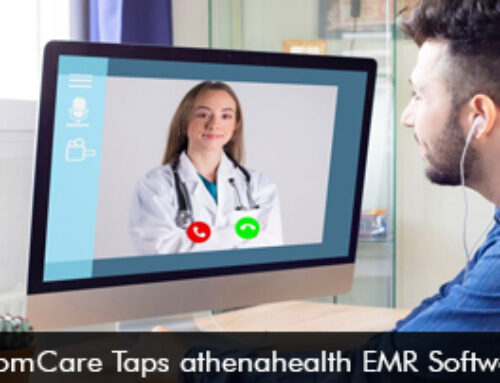Telemedicine has been there for a long time but healthcare professionals and patients both realized its true potential with the surge of the COVID-19 pandemic. The telemedicine platform went far and beyond just using the phone to reduce one on one visits. Hospitals and clinics in the United States have resorted to Telemedicine EMR Software solutions to diagnose, treat and monitor various patient conditions remotely via video sessions.
In March 2020 telemedicine visits increased by 50% due to the pandemic and lockdown. The robust solution helped to curb the spread of the virus and reduce the burden on hospitals.
Benefits of Telemedicine Platform to Patients
A survey revealed that patients are inclined to use the telemedicine platform to receive care from the comfort of their homes. The survey results showed that three out of every four respondents had an interest in using the robust platform.
Patients have shown interest in telemedicine software solutions because of the following reasons,
- Eliminates the need to travel down to the clinic
- Effective and prompt treatment can be received remotely
- It’s a safe way to connect with the doctor especially during the pandemic
- Easy access to the healthcare provider
- Reduced costs
However there are always two sides to the story, some patients have their reservations and concerns regarding telemedicine technology and still prefer in-person visits with their practitioners.
What are the Main Patient Concerns regarding Telemedicine EMR Software Solution?
Patients mainly have three major concerns with the telemedicine solution,
- The quality of medical treatment they will receive through the platform
- The technology used
- Security issues
Healthcare professionals must address these concerns so patients who are uncomfortable or don’t have a positive view about telemedicine sessions start to believe in its effectiveness.
Responding to these Concerns
Quality of Medical Treatment – One of the most common patient concerns is that patients feel that telemedicine sessions are not as effective as in-person visits. They have an impression that video sessions won’t be fruitful as the quality of care may not be the best.
What can be done? Medical providers can address this issue by educating their patients about the benefits of different types of telemedicine such as synchronous, asynchronous, and remote monitoring. For example, synchronous telehealth sessions are designed for patient check-ups, consultations, and sessions. So if you want to see your therapist you will go for the synchronous telehealth option. Asynchronous telehealth is best when patients need to ask quick questions from their provider, this can be related to medication dosage or a quick remedy for ailments such as migraine or mild stomach issues. Patients can have their initial session via the telemedicine platform and if the doctor feels they would want an in-person visit they can always let the patient know. Also, patients feel that virtual sessions are cold and lack that touch of personalization however, providers need to show that the reality is the exact opposite. Physicians can make sure of a welcoming virtual environment in which the patient feels comfortable and engaged.
Technology Concerns – For a telemedicine session to be successful the main prerequisite is to have a stable internet connection and a decent smartphone that supports video calls.
What can be done? Healthcare providers can indeed do little if the patient’s WIFI connection is slow and therefore interrupts the session. What providers can do is to inform their patients about the minimum technical requirements that are necessary for the telemedicine session to be successful. This will help patients to have the necessary technology before the virtual session with their doctor.
Security Concerns – Having a session online means patients are concerned about the confidential information shared during the session because the doctor can store and record these sessions for future reference.
What can be done? It’s solely the provider’s responsibility to provide a HIPAA compliant and safe platform where information can be safely exchanged and also make sure that the internet connection is secured. It is also advised that doctors ask the patients before recording their session, this will make the patient feel comfortable as they are being asked and not told about it later. The data should only be accessed to authorized users and the right decorum should be followed to access this data.
The Prospects of Telemedicine
Telemedicine software solutions are experiencing a boom as it has helped patients get the right treatment without having to leave their homes in the wake of the pandemic. Telemedicine offers convenience, effective diagnosis, and quick treatment options which suggests it is here to stay. By addressing the above-mentioned patient concerns practices can be sure to have more patients on board who believe in the value of this powerful platform.







